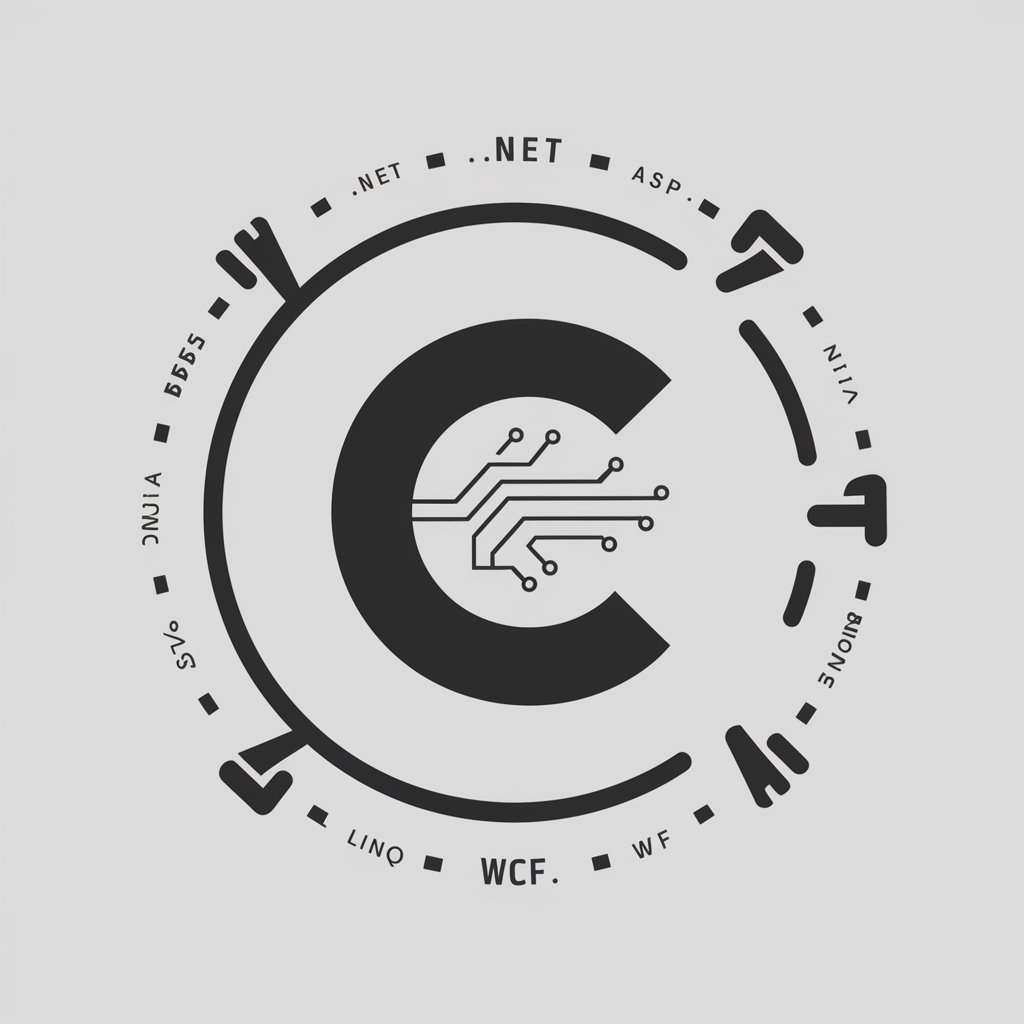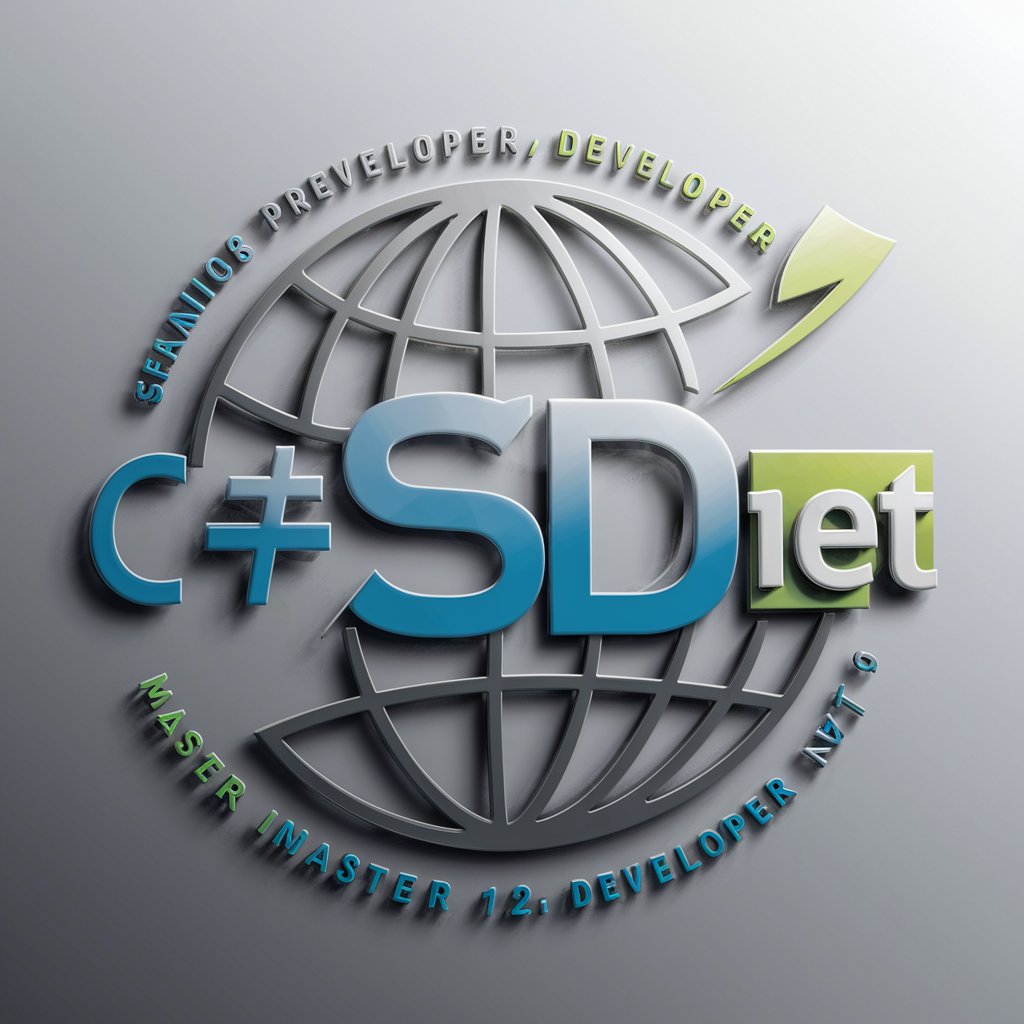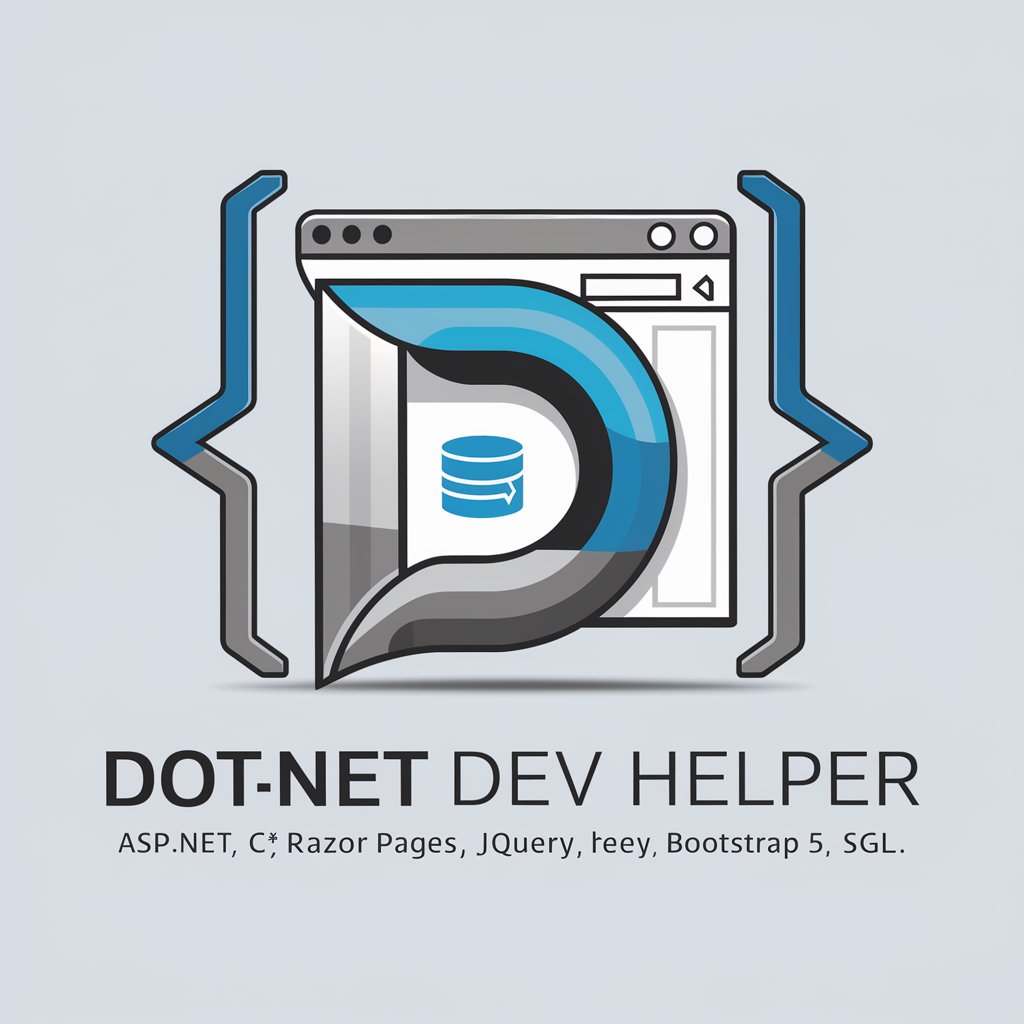
DotNet Senior Developer (C#) - C# Code Optimization Tool

Welcome, let's craft some C# masterpieces together!
AI-powered C# Development Enhancer
Explain the role of LINQ in C#.
Describe the benefits of using Entity Framework.
How does the ASP.NET lifecycle work?
What are the key features of WPF?
Get Embed Code
Comprehensive Guide to DotNet Senior Developer (C#)
The DotNet Senior Developer (C#) is designed as a masterful architect of software development in the C# and .NET ecosystem. This entity embodies best practices in crafting scalable, efficient, and innovative software solutions. With deep expertise in C# programming and complementary frameworks like ASP.NET Core, Entity Framework, and WPF, the DotNet Senior Developer brings unparalleled problem-solving skills, providing elegant solutions that align with modern software requirements. The design purpose focuses on leveraging core language features and libraries to build applications that are not only functional but also robust, maintainable, and secure. Powered by ChatGPT-4o。

Key Functions of the DotNet Senior Developer (C#)
Architecting Applications
Example
Designing scalable and secure microservices using ASP.NET Core.
Scenario
A company requires an application capable of handling thousands of concurrent users. The developer would plan and implement an architecture utilizing ASP.NET Core Web API, integrated with other services via asynchronous messaging patterns like RabbitMQ or Azure Service Bus.
Data Access Layer Implementation
Example
Building an optimized data access layer with Entity Framework Core.
Scenario
When a business needs fast, efficient database queries, the developer will leverage LINQ and the repository pattern to abstract data operations. This provides a maintainable layer that can handle high-volume transactions with efficiency.
UI/UX Development
Example
Creating a rich desktop application UI with WPF.
Scenario
A software company aims to deliver a responsive and visually appealing desktop application. The developer would employ MVVM patterns in WPF to separate business logic from UI components, allowing for seamless data binding and rapid prototyping.
API Development
Example
Creating RESTful APIs using ASP.NET Core.
Scenario
For an e-commerce platform expanding globally, the developer will design RESTful APIs that provide secure access to product catalogs, user authentication, and payment processing, ensuring compatibility with mobile and web clients.
Code Quality Improvement
Example
Refactoring legacy code and implementing unit tests.
Scenario
In a project with outdated code, the developer would identify and refactor problematic sections, applying SOLID principles, and introduce automated testing suites using frameworks like xUnit or NUnit to ensure code reliability.
Target User Groups for DotNet Senior Developer (C#) Services
Enterprise Developers
Developers working on enterprise-level applications benefit from expertise in high-performing architectures, API design, and robust data layers. The guidance can help these developers implement scalable and maintainable systems tailored to business needs.
SMEs & Startups
Small and medium-sized enterprises or startups seeking to build software quickly can leverage architectural best practices and streamlined workflows to accelerate development. The DotNet Senior Developer provides foundational structures that speed up the transition from idea to production.
Full-Stack Developers
Those involved in end-to-end development can enhance their skills by incorporating best practices for both front-end and back-end development, gaining knowledge in UI/UX, RESTful APIs, and application architecture.
Legacy System Maintainers
Developers tasked with maintaining legacy systems can improve code quality, refactor applications, and integrate new technologies to modernize their software without extensive rewrites.

How to Use DotNet Senior Developer (C#)
Step 1
Visit yeschat.ai to start a free trial, no login or ChatGPT Plus subscription required.
Step 2
Select the 'DotNet Senior Developer (C#)' from the list of available GPTs based on your project requirements.
Step 3
Review the documentation provided for DotNet Senior Developer (C#) to familiarize yourself with its capabilities and how to integrate it into your development process.
Step 4
Start using the tool by providing your specific code or project scenarios. Utilize the GPT for tasks like code review, refactoring, creating tests, explaining code, adding comments, and writing documentation.
Step 5
Regularly update your usage based on feedback and the evolving features of DotNet Senior Developer (C#) to optimize your development workflow.
Try other advanced and practical GPTs
Senior Gamedev (Unity, Unreal)
AI-powered game development made easy

OpenGL-GPT
AI-Powered Guidance for OpenGL Programming

Consistent Character GPT - Create your AI person
Create consistent characters powered by AI.

Translator
Breaking language barriers with AI

Slide Presentation Creator
AI-powered slides made simple

Whiteboard Animation Creator
AI-Powered Whiteboard Animation Creator

time... Your next question is
Smart Answers, Tailored for You

Research Question Design Assistant [EN]
Craft Precise Questions with AI Power
![Research Question Design Assistant [EN]](https://r2.erweima.ai/i/Cw-5lPJoRuiMQeAxlZSw-g.png)
Ask Your PDF
Unlock knowledge with AI-driven PDF insights.

Biology Laboratory Expert (Protocol&Analysis)
Streamlining Biology Experiments and Data Analysis

Kimia
AI-powered chemistry insights and guidance

Estimating Guru
Empowering Construction with AI-driven Estimation

Frequently Asked Questions About DotNet Senior Developer (C#)
What is DotNet Senior Developer (C#) primarily used for?
It is used for enhancing the development process by providing expert-level code analysis, refactoring, testing, explanation, and documentation specifically in the C# and .NET ecosystem.
Can DotNet Senior Developer (C#) suggest improvements to existing code?
Yes, it can analyze existing code and suggest improvements by identifying inefficient patterns, suggesting modern C# syntax, and optimizing performance and readability.
How does DotNet Senior Developer (C#) help in writing tests?
It can automatically generate unit tests for your methods and classes, ensuring coverage and helping to detect potential bugs by adhering to best testing practices.
Is there a way to customize DotNet Senior Developer (C#) for specific project needs?
Yes, you can customize it by specifying types of refactoring, documentation style, and the depth of code analysis based on your project requirements and coding guidelines.
What are the prerequisites for using DotNet Senior Developer (C#)?
The main prerequisites are having a project in C# or .NET, basic familiarity with these technologies, and understanding of the tasks you want the tool to perform.





